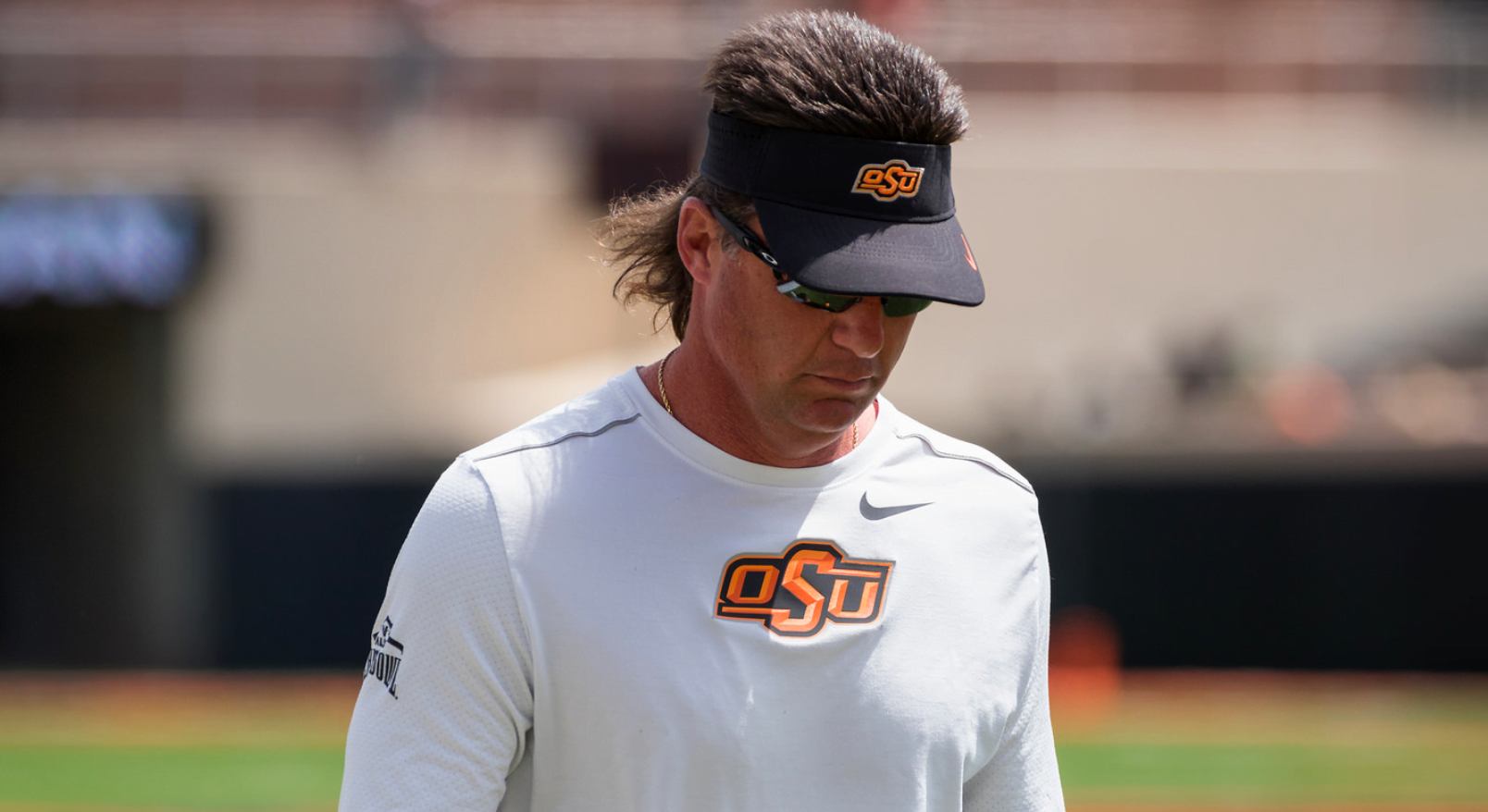Football
Chalk Talk: Why OSU Ran So Much Against the Longhorns

The Oklahoma State offense struggled in what was their lowest point total of the season in a 13-10 overtime win over Texas. The Cowboys ran the ball 51 times averaging less than 3 yards per carry. In this Chalk Talk, we’ll look at why they ran so much and what they need to do to improve going forward.
Texas’ defensive coordinator Todd Orlando intelligently put three men in the box with three linebackers and everyone else in coverage. He did this for a number of reasons. First of all, he knew OSU’s run offense, specifically in the two-back run game, rarely attacked the interior of the defense. Rather, they used wide zone plays which allowed the second-level players to flow to the ball and minimize the run game’s effectiveness. With this in mind, he pinched his lineman and allowed the linebackers to instinctively flock to the ball. Second, he knew because he was playing with maximum coverage, he would force Rudolph and OSU’s offense to keep checking to the run. Orlando’s strategy worked, and OSU had nothing they could go to.
The Cowboys didn’t have any plays in the playbook to counteract this defense, especially in their two-back sets, so they had to keep checking to the run because none of the passing plays they could change to would work against that defense.
Don’t forget that OSU’s offense only has roughly 20 or so plays in its base playbook. In fact, color commentator Brian Griese mentioned that Gundy told the broadcast team exactly that. On one hand, they’re able to play quickly. But on the other hand, it limits what an offense can do when facing specific defenses.
In the third quarter, the Cowboys tried to use the plays they had that countered Texas’ defense. They spread out and used inside run plays with now screens on the perimeter. It had mixed results, but they ran it fairly frequently because they didn’t have much else in their playbook to use.
The Pokes’ poor offensive performance ultimately came down to two things. First of all, they didn’t have enough plays to counter Texas’ defense. Second, they didn’t have the personnel to run the ball against Texas’ light box. They did have some success on the ground when they went lead zone (and not outside zone) because the second-level players were directly blocked, but for the most part, the linebackers were able to follow the ball and make the tackle on a consistent basis.
Moving forward, it will be interesting to see what OSU does against West Virginia. The Mountaineers will assuredly replicate the game plans of TCU and Texas by staying three deep and forcing OSU to try and methodically move the ball (especially considering they’re a 3-3 defense as is). If OSU spreads out West Virginia and uses short and intermediate concepts to move the ball, they should have vastly more success than they did against the Longhorns. Remember that three-deep coverage has weaknesses — we’ve seen it firsthand with OSU’s defense.
Even with only a three-man rush, the defense has five defenders who are responsible for covering more than 53 yards from sideline to sideline. It’s an easy defense to attack if you know what to do. It’s just a matter of whether OSU will attack those weaknesses, even at the expense of changing what they do offensively.
What would you have done if you were calling plays against Texas? Leave your opinions in the comments below!

-

 Football2 days ago
Football2 days agoOklahoma Transfer Gavin Freeman Commits to Oklahoma State
-

 Wrestling22 hours ago
Wrestling22 hours agoOSU Wrestling: 2020 Olympic Gold Medalist David Taylor Named Head Coach of Cowboy Wrestling
-

 Football4 days ago
Football4 days agoReport: Cornerback Jordan Reagan Enters Transfer Portal
-

 Softball3 days ago
Softball3 days agoOSU Softball: Cowgirls Secure Bedlam Series Win with 6-2 Victory against Sooners






